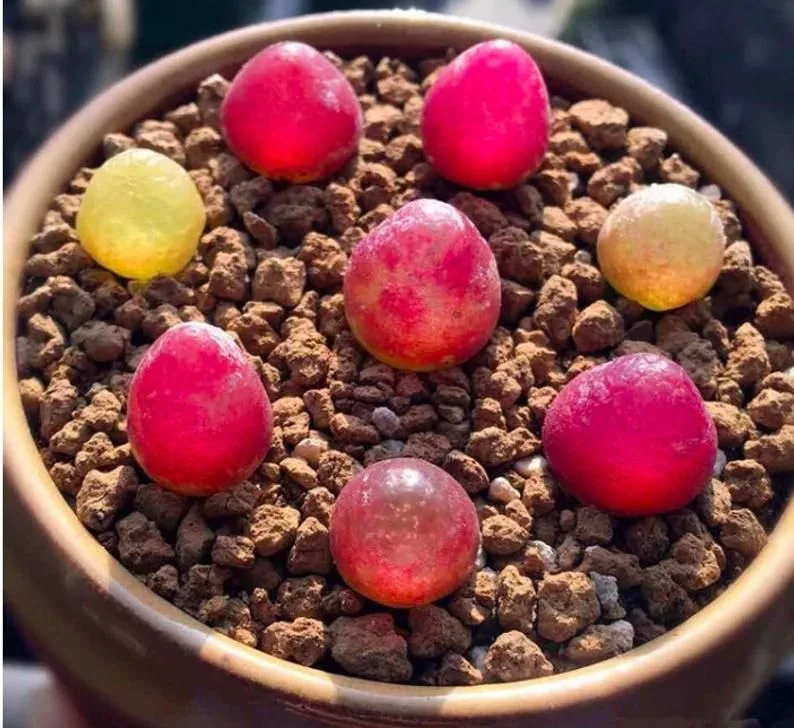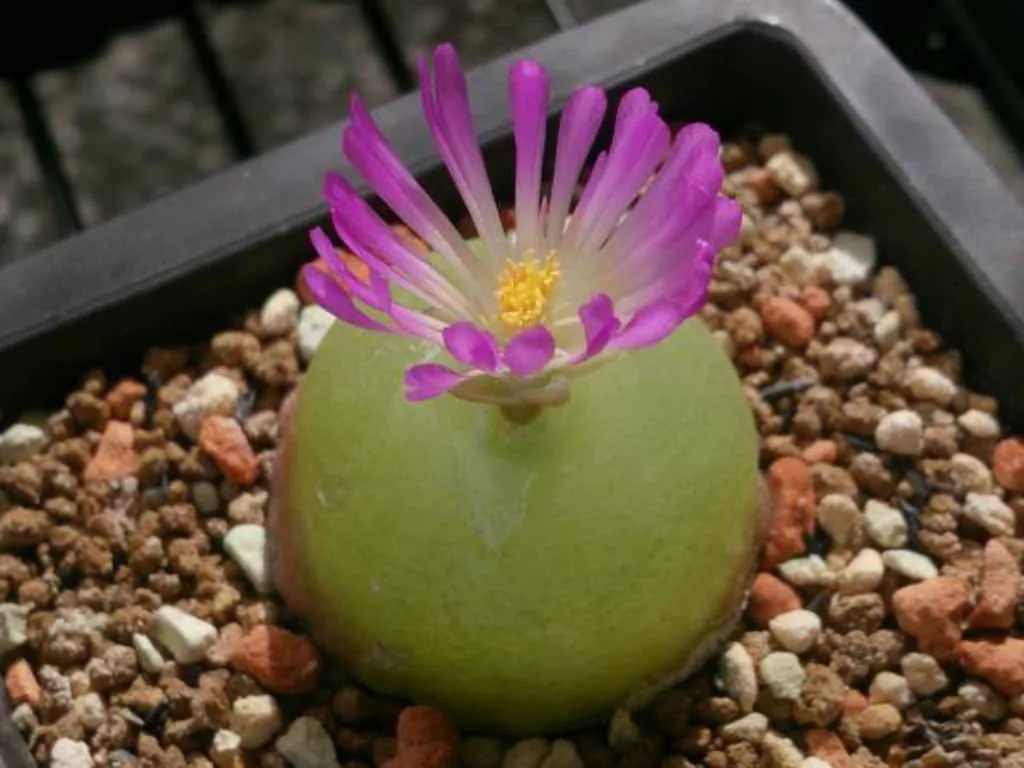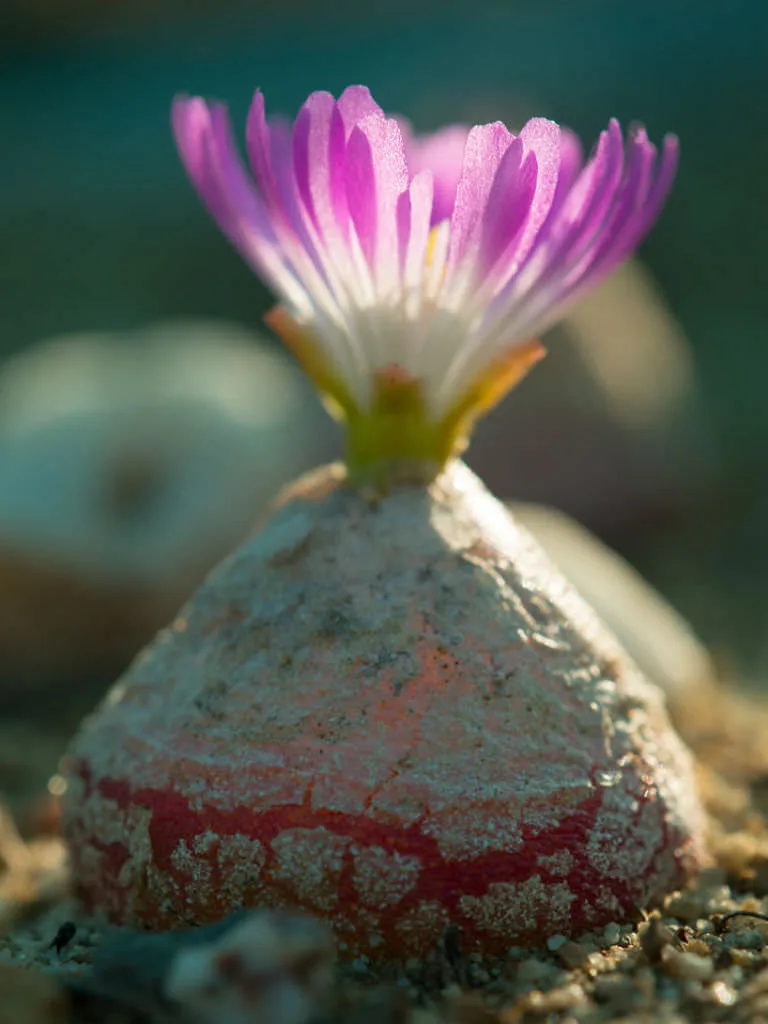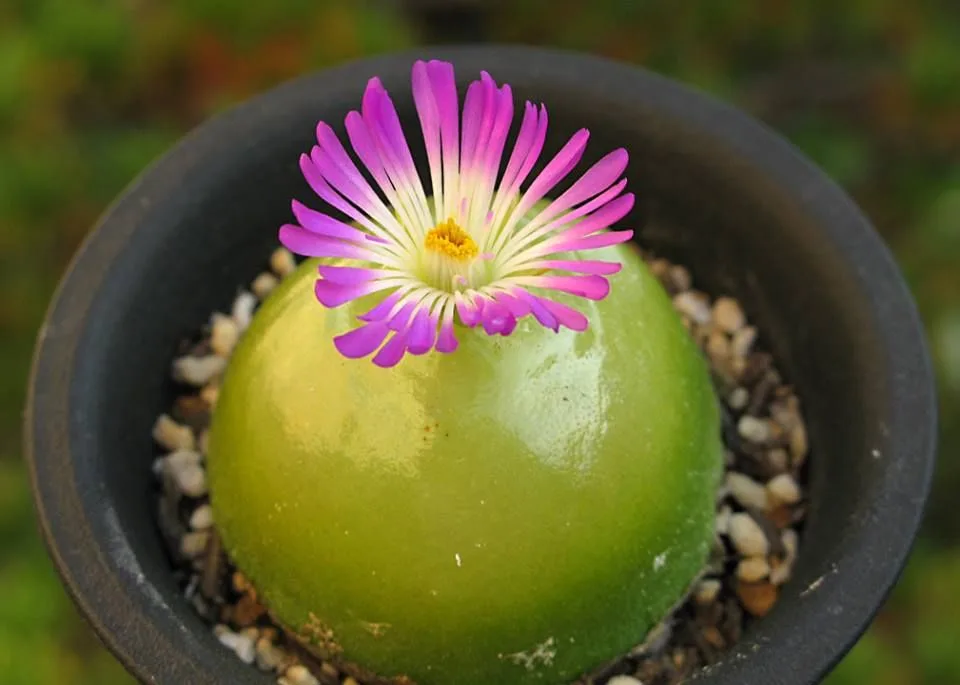índice
Introduction
Discover the fascinating Burger’s Onion Succulent (Conophytum Burgeri), a unique plant that enchants succulent lovers. Originally from the arid regions of South Africa, this remarkable succulent is known for its fleshy leaves that resemble small onions. Its scientific name, Conophytum Burgeri, pays homage to the South African botanist Dolfyn Burger, who contributed significantly to the study of succulents in the region.
Meaning of the Succulent Burger’s Onion
The Succulent Burger’s Onion carries with it a symbolic meaning of resilience and adaptation. Its peculiar shape and ability to thrive in arid environments stand out as a reminder of the beauty that can emerge even in seemingly adverse conditions. This succulent not only adds a unique touch to your collection, but also serves as an inspiring reminder of how nature can flourish in challenging circumstances. Explore the enchanting world of Conophytum Burgeri and let yourself be enveloped by its botanical uniqueness.
| Common Name | Succulent Burger’s Onion |
|---|---|
| Botanical Name | Conophytum Burgeri |
| Family | Aizoaceae |
| Plant Type | Succulent |
| Adult Size | Small |
| Sun Exposure | Full Sun to Half Shade |
| Soil Type | Well-drained, Sandy |
| soil pH | Slightly acidic to neutral (6.0-7.0) |
| Flowering Season | Spring to Summer |
| Flower Color | Yellow, White |
| Native Area | South Africa |
| Toxicity | Not Toxic |

How to Care for the Succulent Burger’s Onion
Light:
To ensure the well-being of the Succulent Burger’s Onion, choose a location with adequate sun exposure. These succulents thrive in full sun to half shade, ensuring healthy and vibrant growth.
Soil:
Soil plays a crucial role in caring for this unique succulent. Opt for well-drained, sandy soil to prevent excessive water accumulation, providing an ideal environment for the roots to develop.
Water:
Watering is an essential part of caring for the Succulent Burger’s Onion. Make sure you allow the soil to dry out completely between waterings. Avoid overwatering, as this can lead to root rot problems.
Temperature and humidity:
These succulents thrive in warmer climates. Keep the temperature at around 20-25°C to ensure a comfortable environment. With regard to humidity, avoid excessively humid locations, as the Burger’s Onion Succulent prefers drier conditions.
Fertilizing:
Fertilizing is necessary to provide essential nutrients. Use a balanced fertilizer during the growing season (spring to summer). Follow the instructions on the label to avoid excess nutrients.
Follow these care guidelines and watch your Succulent Burger’s Onion flourish with health and vitality.
How to Make Succulent Burger’s Onion Cuttings
Choosing a time:
Before starting the seedling process, choose the right period. Spring is usually the best season for this procedure, when the plant is actively growing.
Selecting and Preparing the Soil:
- Choice of Containers: Opt for small containers with drainage holes to prevent water accumulation.
- Suitable Soil: Use a substrate specifically for succulents or cacti, ensuring good drainage.
Propagation by division:
- Remove the plant: Carefully remove the Succulent Burger’s Onion from the pot.
- Separating the Cuttings: Carefully divide the leaf clusters, ensuring that each cutting has healthy roots.
Propagating by Leaves:
- Choosing Leaves: Select healthy leaves.
- Healing: Let the leaves heal for a day before planting them in the ground.
How to Plant the Succulent Burger’s Onion Seedling
Planting:
- Holes in the soil: Make small holes in the prepared soil.
- Seedling Positioning: Plant the seedlings carefully, ensuring that the roots are firmly in the ground.
- Moderate Watering: Carry out moderate watering after planting.
Post-Planting Care:
- Avoid Direct Sunlight: Protect the seedlings from direct sunlight for the first few weeks.
- Monitor Watering: Keep the soil slightly moist, avoiding overwatering.
Follow these simple steps to successfully make seedlings and plant the Succulent Burger’s Onion, ensuring healthy and vigorous growth.

Most common pests and diseases
Pests:
- Mealybugs: Identified by small white or brown dots. Solution: Use a neem oil spray.
- Mites: Can cause spots and fine webs on the leaves. Solution: Increase humidity and apply neem oil.
Diseases:
- Root rot: Caused by overwatering. Solution: Adjust watering frequency and improve drainage.
- Leaf rot: The result of an excessively humid environment. Solution: Reduce humidity and ventilate the room.
Common Problems and Their Solutions
Yellowing leaves:
Cause: Excess water or lack of light. Solution: Adjust the watering regime and move the plant to a brighter spot.
Slow growth:
Cause: Lack of nutrients in the soil. Solution: Fertilize the plant during the growing season with a balanced fertilizer.
Changes in leaf color:
Cause: Excessive exposure to the sun. Solution: Move the plant to a place with filtered light or partial shade.
When faced with common problems, quick identification and appropriate solutions will ensure that your Succulent Burger’s Onion stays healthy and lush.

Curiosities and myths
Curiosities:
- Origins in South Africa: The Succulent Burger’s Onion, scientifically known as Conophytum Burgeri, has its roots in the arid regions of South Africa, where its unique beauty stands out against the desert backdrop.
- Surprising Resistance: Despite its delicate appearance, this succulent demonstrates incredible resistance to adverse conditions, adapting well to environments with little water and high temperatures.
- Night Blooming: The flowers of this succulent often bloom at night, revealing their subtle beauty under the moonlight.
Myths:
- Needs Frequent Watering: Contrary to common belief, the Burger’s Onion Succulent does not require frequent watering. Its internal water storage allows it to survive in drier conditions, making it ideal for gardeners who prefer a more moderate approach to watering.
- Total Aversion to Strong Sun: Although it prefers indirect sunlight, the succulent can actually tolerate short periods of direct sun. It is essential to balance sun exposure to ensure healthy growth.
- Slow Growing: Contrary to the myth that succulents grow slowly, the Succulent Burger’s Onion can grow surprisingly fast, especially when ideal conditions are provided.
Exploring the curiosities and debunking myths about the Burger’s Onion Succulent adds a fascinating layer to the experience of growing this unique plant.

Conclusion
All in all, the Burger’s Onion Succulent (Conophytum Burgeri) stands out as a charming addition to any succulent collection. Originally from the arid regions of South Africa, this unique plant not only impresses with its leaves that resemble small onions, but also reveals intriguing curiosities, such as its nocturnal flowering and surprising resilience. By debunking common beliefs, we realize that this succulent doesn’t require frequent watering and can thrive in drier conditions, and can tolerate short periods of direct sunlight.
When caring for the Burger’s Onion Succulent, attention to light, soil, water and temperature is crucial. The propagation and planting process offers the opportunity to expand your collection in a sustainable way. By tackling common problems, such as yellowing leaves or slow growth, with specific solutions, we guarantee healthy development. Ultimately, growing this succulent is not just a botanical journey, but a celebration of the resilient beauty that nature provides, turning each care into a unique and rewarding experience.
Frequently Asked Questions
What is the rarest succulent in the world?
Determining the rarest succulent in the world is challenging, as rarity is often subject to availability on the market. However, the “Monadenium ritchei” succulent is notable for its exclusivity. Originally from Tanzania, this rare plant impresses with its unique appearance and is highly prized by succulent collectors in search of unusual species.
What is the most popular succulent?
The most sought-after succulent varies according to trends, but Echeveria is often considered a favorite among enthusiasts. Its symmetrical rosettes, available in a variety of colors and sizes, make it a standout in arrangements and landscapes. Its versatility and beauty appeal to beginners and experienced collectors alike.
Which types of succulents like the sun?
Sun-loving succulents come in a wide variety, including Echeveria, Sedum and Crassula. These plants, native to arid environments, thrive in direct sunlight, developing vibrant colors and distinctive shapes. When planning a sunny succulent garden, these varieties are ideal choices, ensuring a stunning and healthy look.







